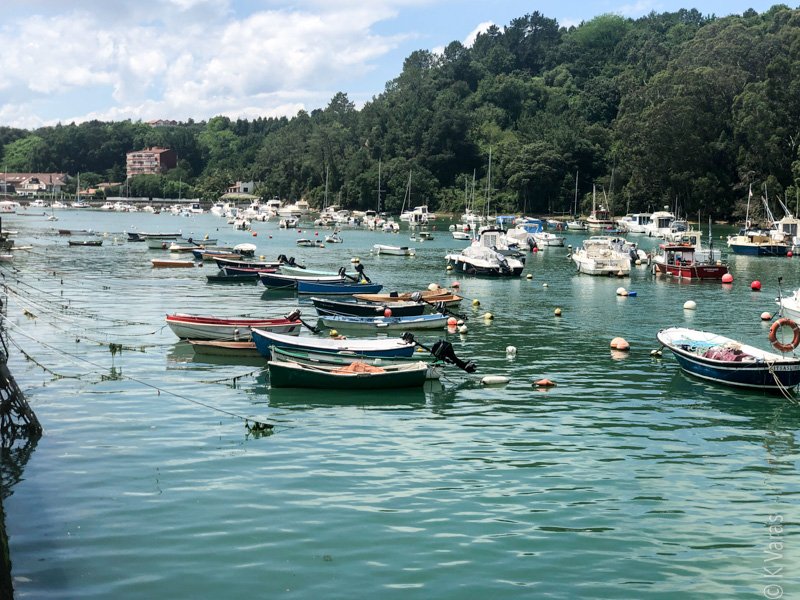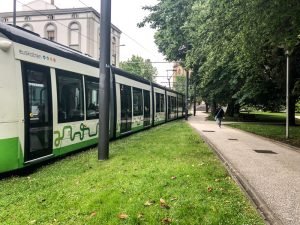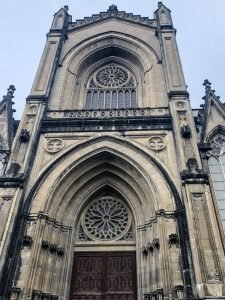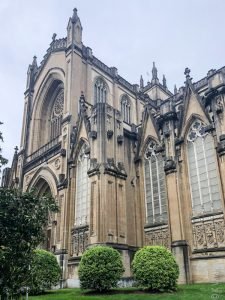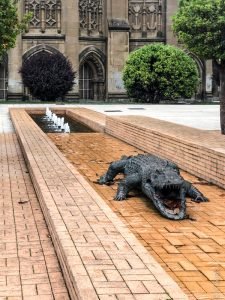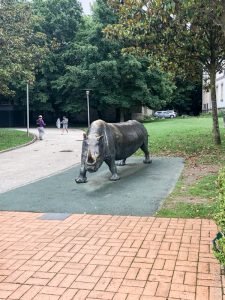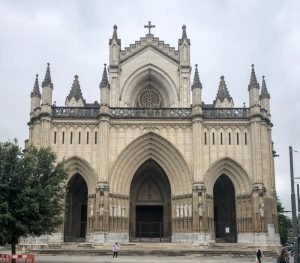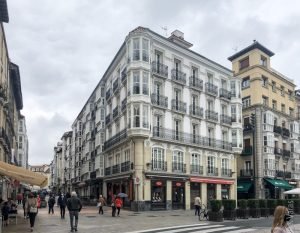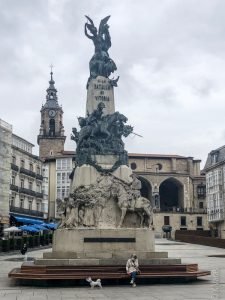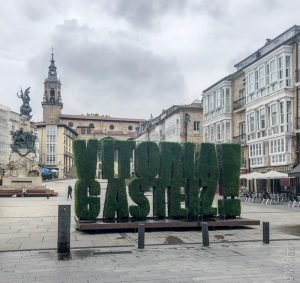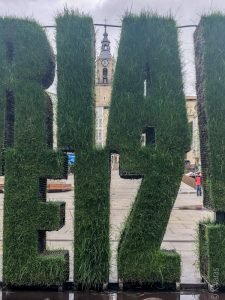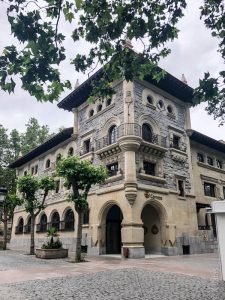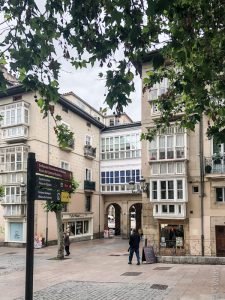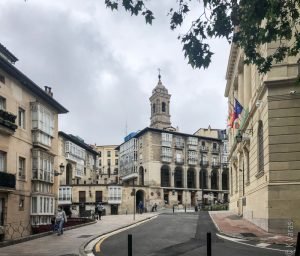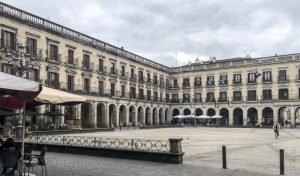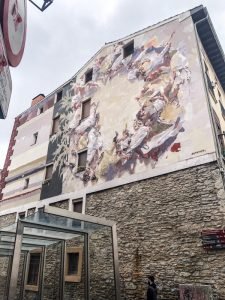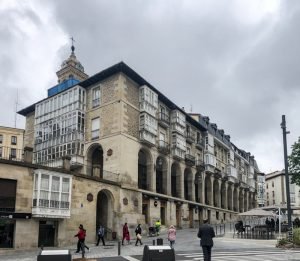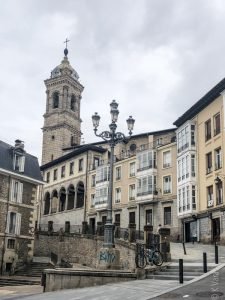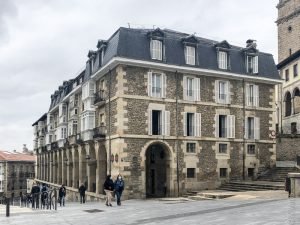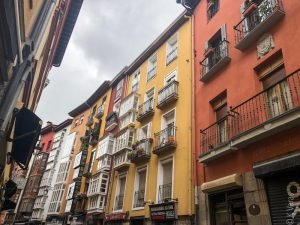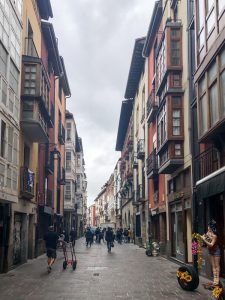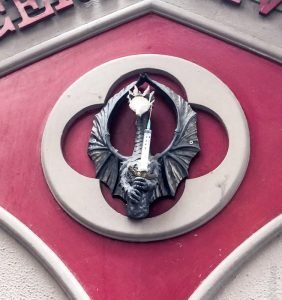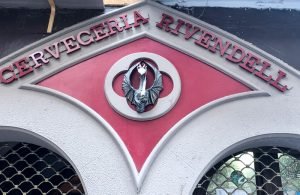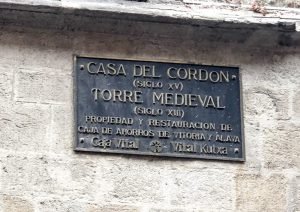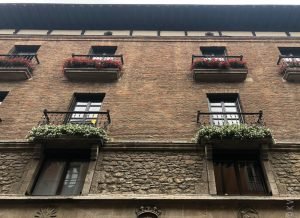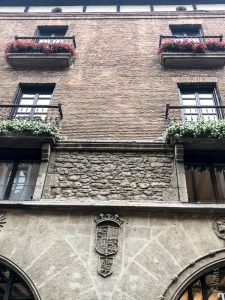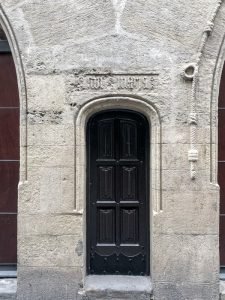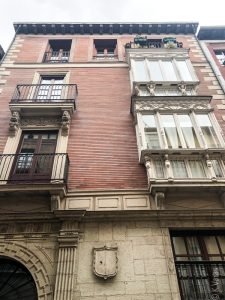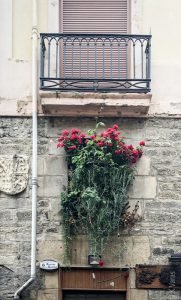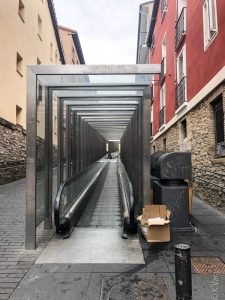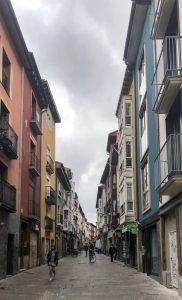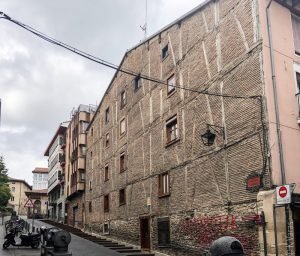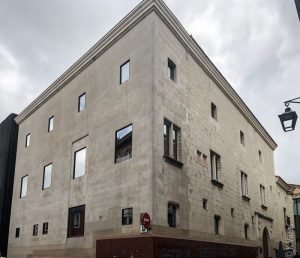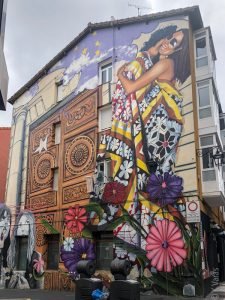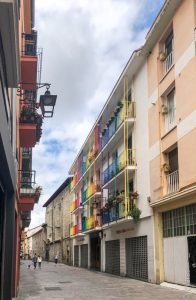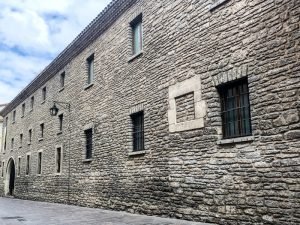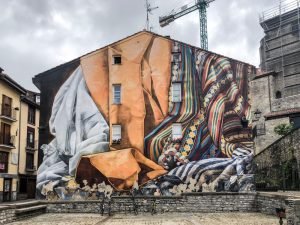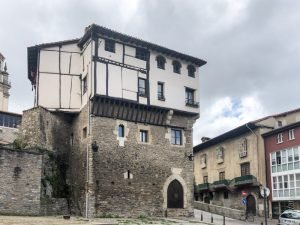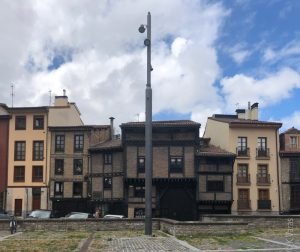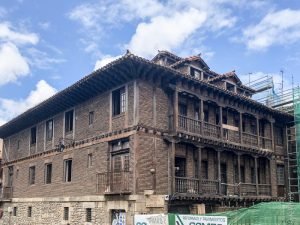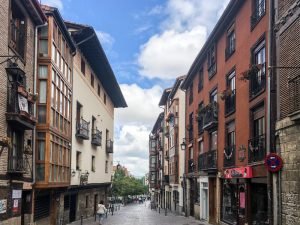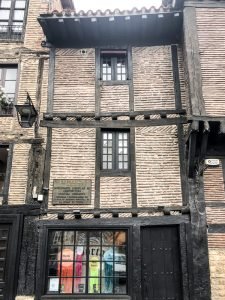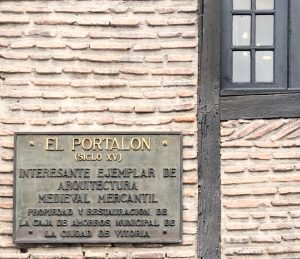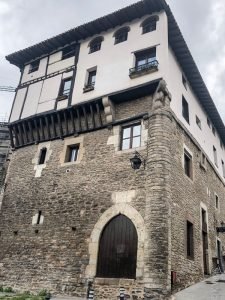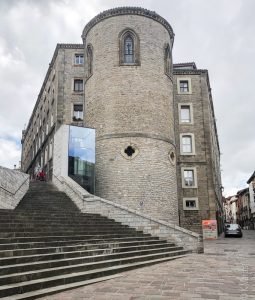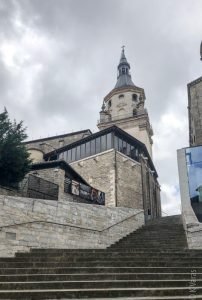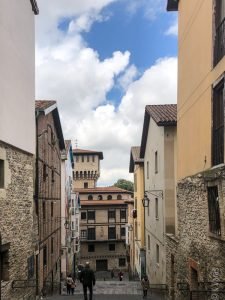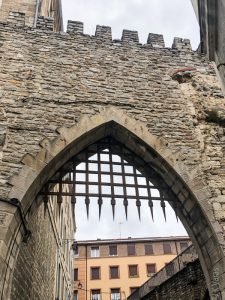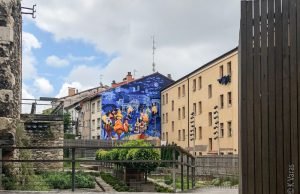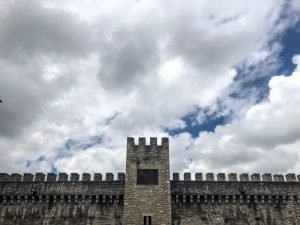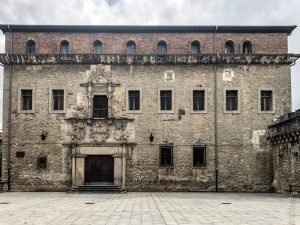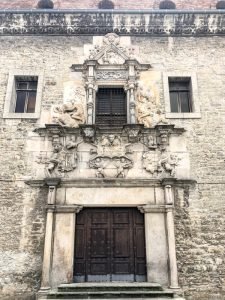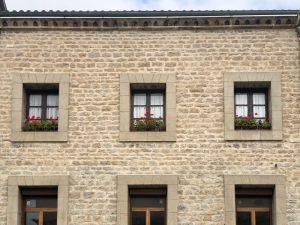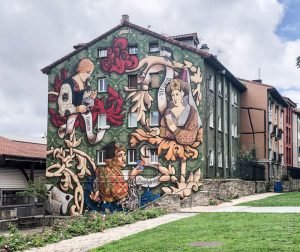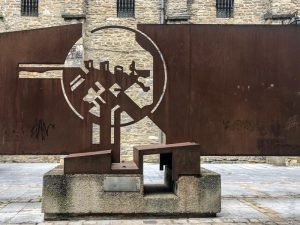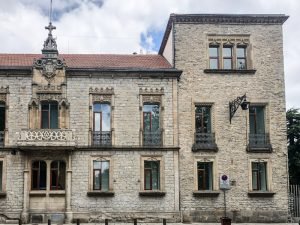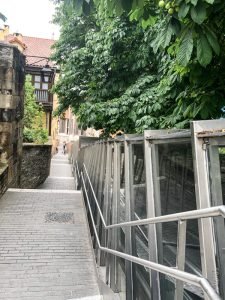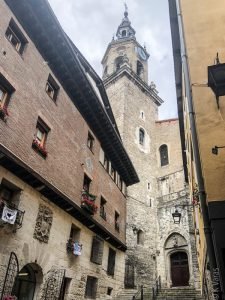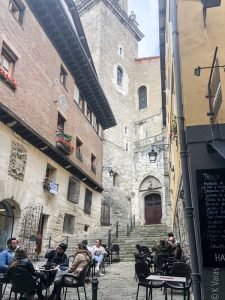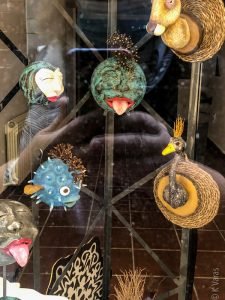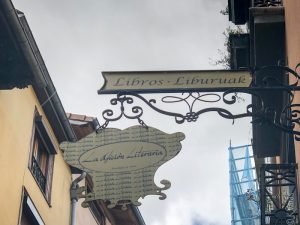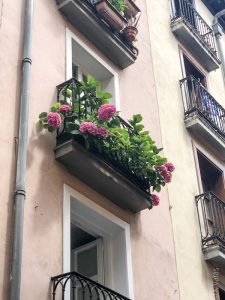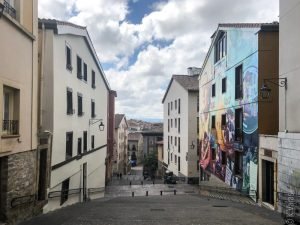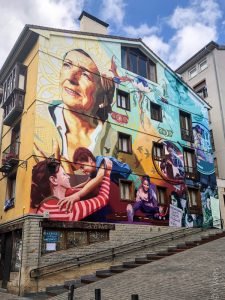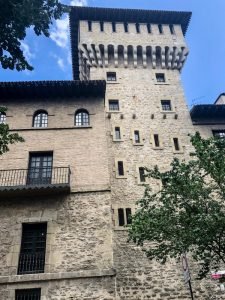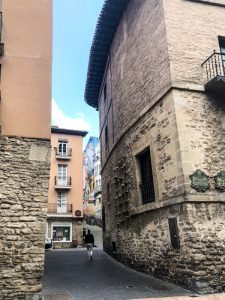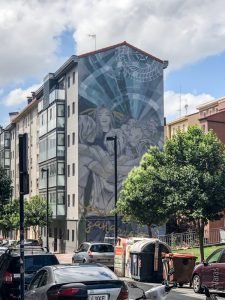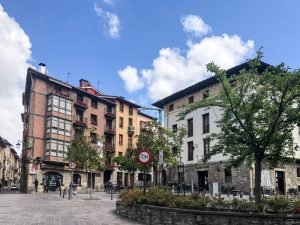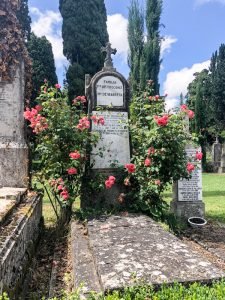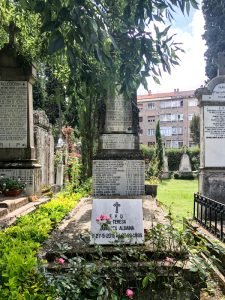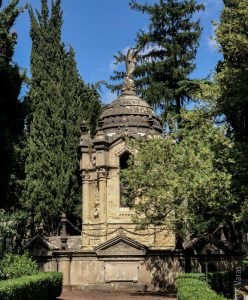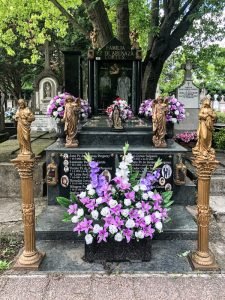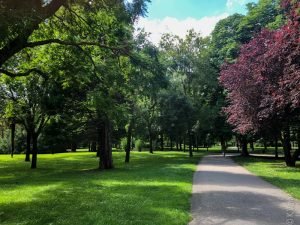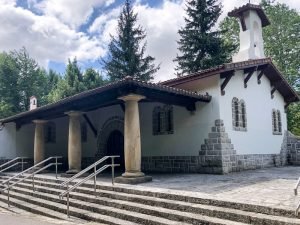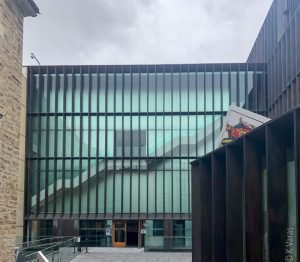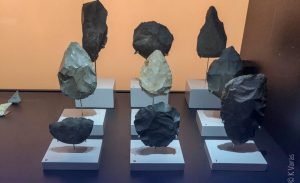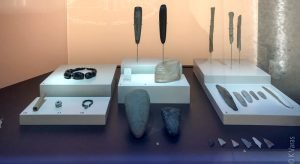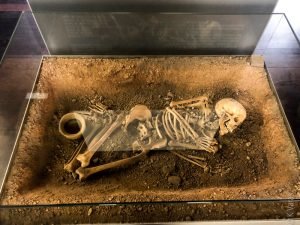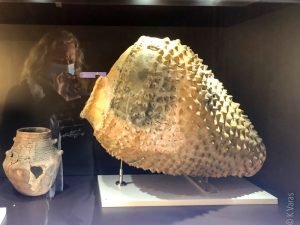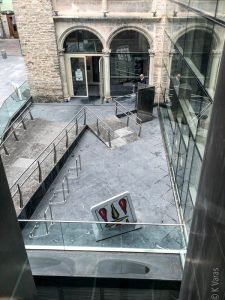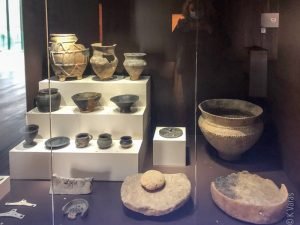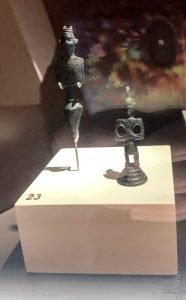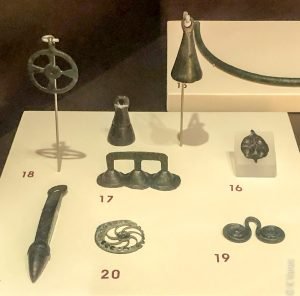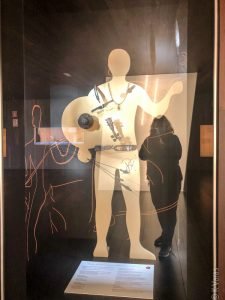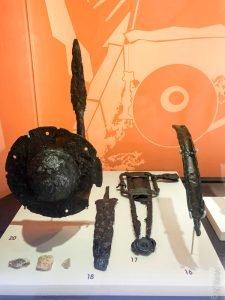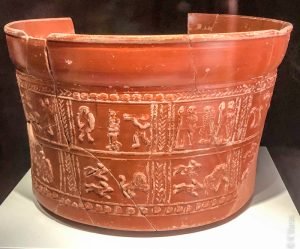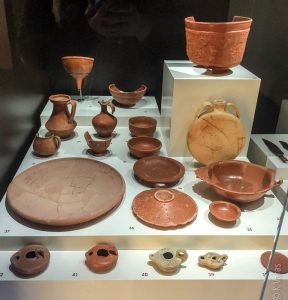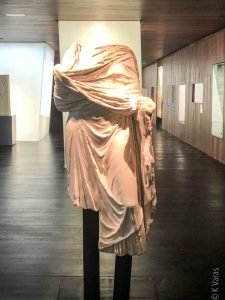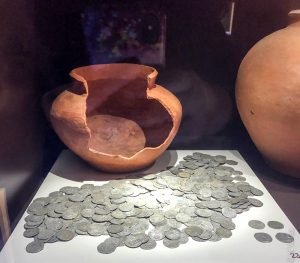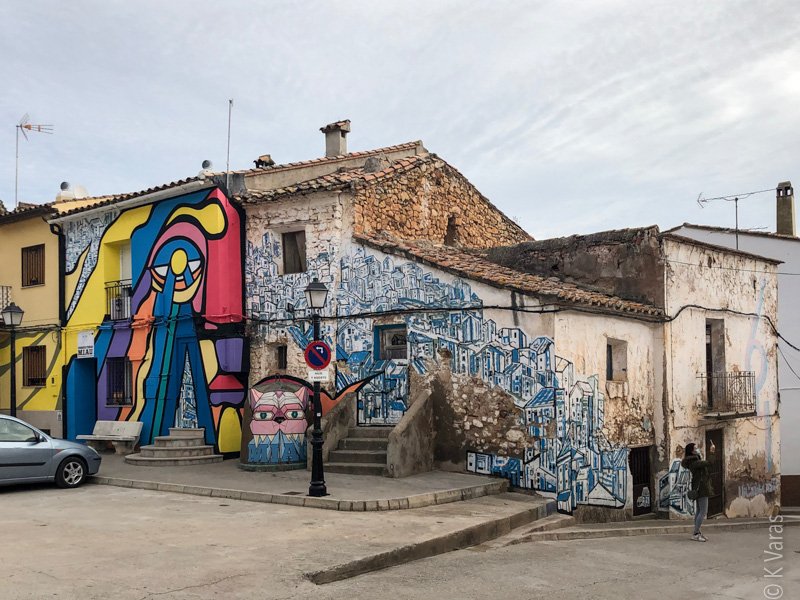
Vitoria-Gasteiz
Here we have another “V” city I have fallen in love with: Vitoria-Gasteiz, the capital of the Álava/Araba province, some 66 km south of Bilbao. This lovely place has been on my radar for a while, pointed out to me by my dear friends, Tom and Esther, who have visited the north of Spain at least a couple of times in the past and loved it. I had to see for myself what had them so excited about this town and I was not disappointed.
In the typical fashion of the Basque Country, the city combines its castellano and euskara names, though the inhabitants call it either Vitoria or Gasteiz depending on their linguistic preference. It is a very old city, dating back to the VI century and the Visigoths. Later, in the XII century, Sancho the Wise, King of Navarre, founded the city of Nova Victoria on the foundations of the vasconic (Basque-speaking) people’s settlement of Gasteiz. In 1199 the town was annexed to the Reino de Castilla and since then it remained in the hands of the Spaniards. I have uncovered a bit of an interesting musical history: after the Battle of Vitoria in 1813 in which the British, Portuguese, and Spanish forces broke Napoleon Bonaparte’s French army, a win that assured the eventual end of French control in Spain, after the news reached Vienna, Ludwig van Beethoven wrote his Op. 91, also known as Battle of of Vitoria or Wellington’s Victory, parts of which sounds an awful like For he’s a jolly good fellow but what do I know, you be the judge. Parts of it sounds like there should be fireworks going off too, but that’s more likely to be Beethoven’s take on the sounds of war.
Not being able to easily find train connections in this part of the country, I took the bus once again. The weather didn’t look promising either but at least it wasn’t raining. The V-G bus station is a ways away from the centre so I took the tram into town, not before announcing to everyone in earshot (and beyond) that I’m a tourist, of course. The one time I decided to be smart about purchasing the correct transit ticket for my needs, I also made the mistake to ask the machine at the tram stop to speak to me in English. Now, when I say “speak” I really mean show me the options in English, little did I know that, I suppose to be more helpful, it would also speak to me back in a very loud voice and with a British accent. I really do not like to announce to the whole world that I’m a foreigner, often my blonde hair and blue eyes sort of give it away (albeit not always, plenty of women have both in Spain), but really … must you holler at such a volume that all I could wish for was that the ground would just swallow me up? Or maybe I just have to stop getting worried about silly things.
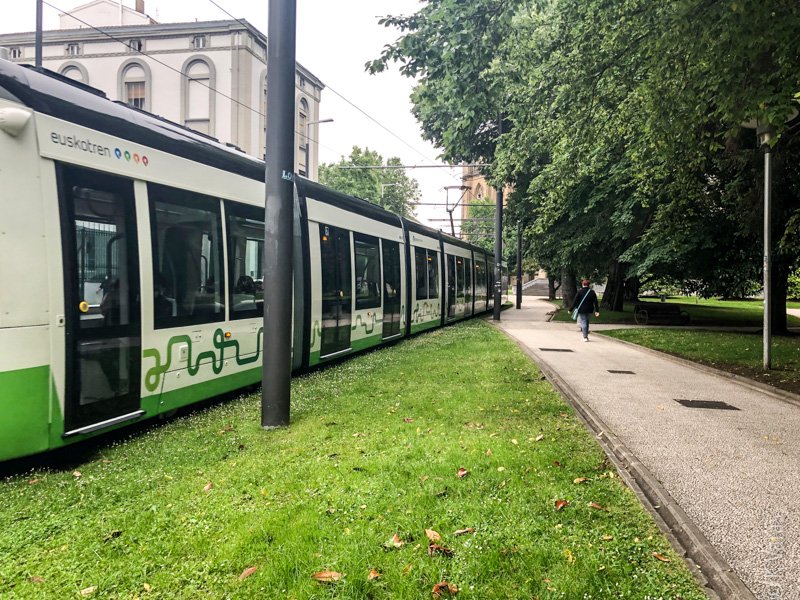
The tram took me close to the centre and I chose to get off right in front of a very imposing church. This turned out to be the Maria Sortzez Garbiaren katedrala or, in normal speak, the María Inmaculada de Vitoria Cathedral, a massive neo-gothic structure surrounded by a beautiful park filled with weird animal sculptures. I should have realized that this was going to be a thing here … lots and lots of green space with, sometimes, weird sculptures. I did not go inside since there wasn’t an inviting door anywhere but I did go all around it.

From there I headed into the old town, first stopping at a plaza proudly reminding me I was, in fact, in Vitoria-Gasteiz. Right next to this plaza, there was, of course, Plaza de España, a grand porticoed square with a neoclassical town hall — I have yet to find myself in a large-ish city in Spain where there isn’t a Plaza de España or a porticoed square — and this one didn’t disappoint. The odd thing about it was the fact that it, in fact, was an actual square and not rectangle, oval, triangle, or circle. I was starting to really enjoy myself here. I also couldn’t resist the locale and stopped for some breakfast pintxos and a coffee.

Refreshed I was ready to tackle the old town’s streets (mostly uphill) and museums. Fortunately the city’s administrators took pity on people like me and installed various escalators and moving ramps to aid in the scaling of the said streets. My knees would be forever grateful except for the fact that these ambulatory aids only went up and not down, and as you must know by now, down is harder than up for these particular knees. The museums I was looking for were ones that Tom and Esther pointed me towards and they were a two-for-one deal. Housed in the same complex (aka the old Bendaña jauregia/palacio de Bendaña and a modern addition) were the Historical Museum of the area (oddly enough in the new part) and the Fournier Karta Museoa (Museo Fournier de Naipes or the Fournier Playing Cards Museum) in the old palace. I was somewhat prepared by my friends’ description of the place but, in all honesty, one cannot be prepared for the Cards Museum. But first I had to go through the ancient stuff (pretty interesting) before I got to the awesomeness that was a collection of every kinds of playing card one could imagine.
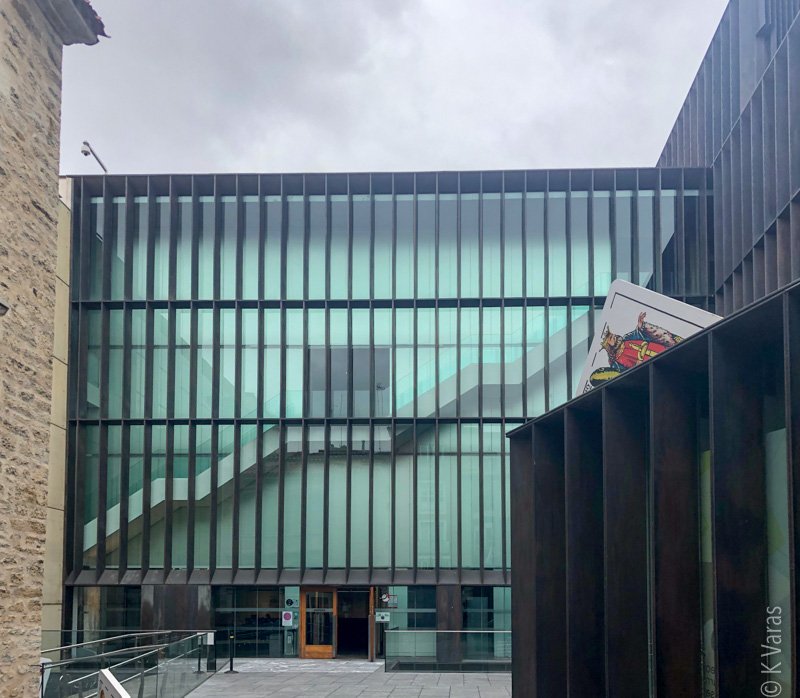
The Fournier Museum is dedicated to the design and manufacture of playing cards by the Naipes Heraclio Fournier S.A. originally founded by said Heraclio Fournier in Vitoria-Gasteiz in 1870. In 1916, his grandson Felix Alfaro, began the collection which, thanks to exchanges with other collectors, purchases, and collections, grew to its current size. Initially it was housed in the old factory until it grew too large and needed a new space. This is when it was moved to the Palacio de Bendaña, a very interesting building on its own. As a lover of design I have to admit I was smitten with this museum, the sheer volume of designs over the centuries, the creativity and wit as well as social commentary on exhibit had me grinning under my mask the whole time. This was, once again, a good time to be wearing a mask as I suppose anyone showing this much outward glee in a place like this could have sent me straight to the loony bin. Suffice to say I took a lot of pictures, many of which are now in a separate Gallery. At the end of my tour I ended up in the main courtyard/grand hall where the equipment used to print the cards is on display. This, too, was quite fascinating and definitely worth a look. The whole experience left me wishing I had finished the card deck I had to design for a class I took years ago at Langara College in Vancouver. My theme was “Recipe Cards” where each card would have been related to a dish. I only made two or three (and I hope they’re still somewhere in a box); at the time I thought people would find it silly but now having seen the crazy stuff put on playing cards, I no longer think my idea was silly at all. I loved everything about this place and highly recommend a visit; you won’t be disappointed!

The skies were starting to clear a bit making my exploration of the old town quite a bit more pleasant than earlier in the day. The streets are not as narrow as in some other old towns and the buildings have a unique look to them, reminding me of old Germanic, maybe even Tudor, architecture. It was definitely the least Spanish-looking Spanish town so far. I’m not saying I didn’t like it though … as a matter of fact, I quite liked it, with the weird stores, crazy steep streets, huge murals, and green everywhere. If I could only move Vitoria-Gasteiz to a warmer climate, I could so live here.

To make my visit here complete, I decided to walk back to the bus station (I was already in the right part of town), a route which took me by a large cemetery, and, although it may sound morbid, I quite enjoyed my stroll through it. I was previously accustomed to seeing two or three people stack-buried one of top of each other but seeing the numbers here piled up in one spot were, to say the least, impressive. And they left plenty of room for more family members to come. All of this makes total sense, of course, land in Europe isn’t cheap, and people have been here a very long time; it’s just a bit of a cultural shock when one has spent most of her life in the (relatively) vast emptiness of Canada. I doubt anyone in Victoria or Vancouver who wants to be buried needs to worry about sharing their plots of earth with other people in the afterlife.

Continuing my exploration of greenery in this very green city, I spent a bit of relaxing time in the Arriagako parkea (AKA Parque San Juan de Arriaga), a large urban park with an old hermitage and another very poorly maintained rose garden, the only thing I found in V-G that didn’t live up to its billing. Or maybe I just have really poor timing.
It was time to get back to Bilbao and the bus beckoned. I left wanting to come back to spend more time exploring this wonderful city, which, I just found out, is not only the provincial capital but also the seat of the Basque Country government. So, in another way, I was reminded of Victoria, BC, the Garden City and seat of the provincial government (remember that our provinces are the same as autonomous communities here, not provinces). The bottom line is that I loved Vitoria-Gasteiz –there, I said it– and I really do hope I can come back soon.
For pictures of the Fournier Museo de Naipes, please go to the Gallery

